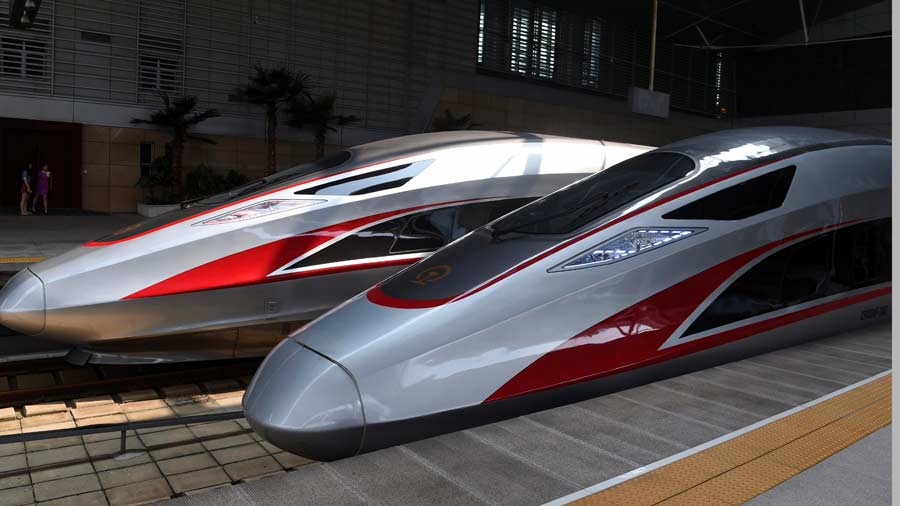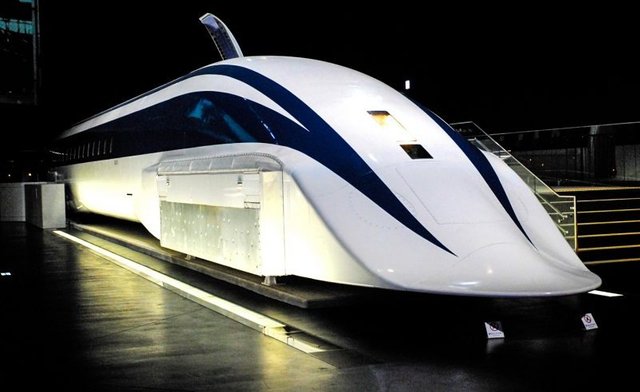The Japanese Maglev, the fastest bullet train in the world
Shanghai (China) The fastest train in the world, linking the Chinese cities of Beijing and Shanghai, will start operating at the end of September, shortening the distance between these two cities by more than an hour, according to local press reports based on information from China. Railway Corporation.
After successfully passing several tests, the so-called Fuxing (which means rejuvenation) will operate regularly from next September 21 with an average speed of 350 kilometers per hour and maximum of 400 kilometers per hour.
The train, also called "the bullet", will circulate about 50 kilometers per hour faster than the previous generation, which was about 300 km / h, which will reach 350 km / h of average speed.
Imagine a train crossing Japan at an amazing speed. Its wheels do not touch the ground, in fact, it is floating! ... This experience, which seems to come from a dream, will soon be a reality thanks to the famous Japanese Maglev trains.
Japan is already known for its bullet train system, spread throughout the country and operational since 1964. The shinkansen, currently the fastest train in the world will cede its position to the Maglev, when this means of transport becomes a reality in a few years.

How the Maglev works
The SC Maglev or superconducting magnetic train has been developed by the Central Japan Railway Company and the Railway Technical Research Institute since the 70s. Its operation is based on the principle of magnetic repulsion, capable of creating a powerful magnetic field that act between the cars of the train and the road itself. The word maglev, in fact, is the combination of two words: "magnetic" and "levitation". This magnetic levitation, or what is the same, that the train floats in the air, is achieved by an electrodynamic suspension system known as EDS.
The rails contain two sets of crossed metal coils in the form of "eight" that create an electromagnetic model. The train, on the other hand, carries superconducting magnets called "bogies". When it is stopped, the train rests on rubber wheels. When beginning the movement, the train advances slowly on them making possible that the magnets located under the train interact with those of the route. Once the train reaches 150 kilometers per hour (93 miles / hour), the magnetic force created is powerful enough to raise the train 10 centimeters (4 inches) from the ground, eliminating friction and allowing to increase the speed.
The same magnetic force that elevates the train makes it move forward and stays centered without leaving the track, which makes traveling in it very smooth and exceptionally safe

What is the maximum speed of the Maglev 2018
In April 2015, a manned Maglev superconductor train broke the two existing speed records of vehicles on rails. The train was timed and reached 603 kilometers per hour (375 miles / hour). This is a much higher speed than the Maglev trains that already operate in Shanghai, China and South Korea and run between 268 and 311 miles / hour and 68 miles respectively.
The Maglev train also exceeded the previous speed record of the Shinkansen in the tests carried out on the Miyazaki tracks. Most shinkasen operate at speeds of around 500 km / hour (200 - 274 miles / hour). With the new technologies being developed and applied, future trains will probably reach even higher speeds.
Did you know…?
In its 60 years of operation, Japan's high-speed rail lines have had zero fatal accidents, making these trains one of the safest transport in the world. The Maglev service aims to maintain this record.
The future of high-speed trains
The Japanese Maglev can maintain its current world records but we must bear in mind that competitors will come out. The Japanese Prime Minister, Shinzo Abe, has proposed to sell this advanced technology to the United States to build a Maglev line that a New York and Washington.
There are also plans to launch a line from Los Angeles to San Francisco, California, which may reach speeds of over 700 km / h.
Meanwhile, the high speed invites Japanese citizens and also tourists to discover the Maglev Chuo Shinkansen line.